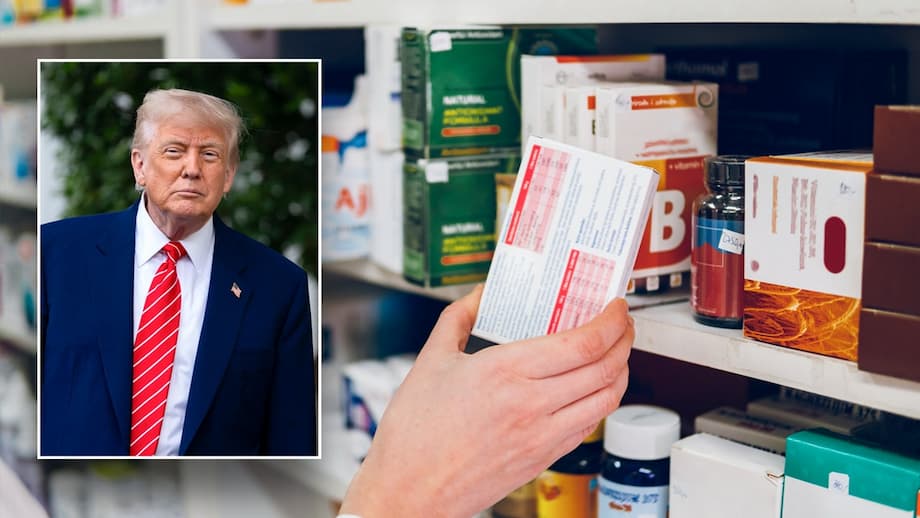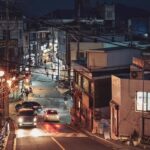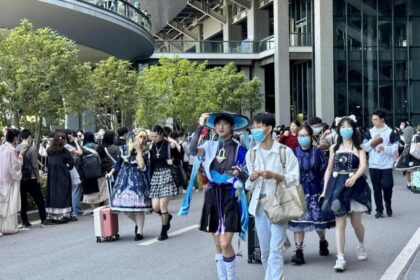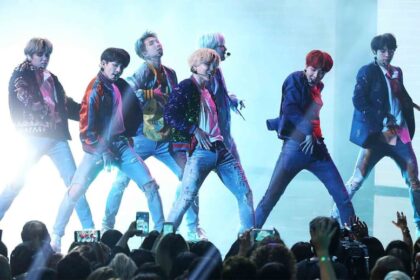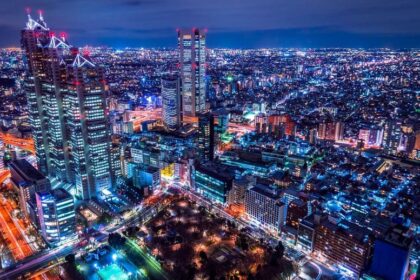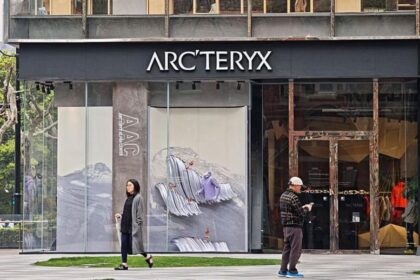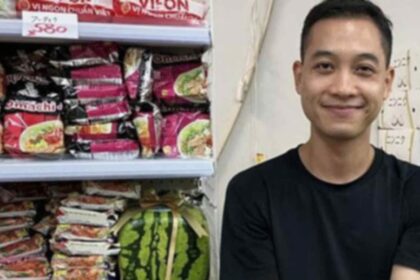A high stakes tariff that could reshape medicine flows
The United States will impose a 100 percent tariff on imported branded and patented pharmaceutical products starting October 1, 2025, part of a broader push to shift critical manufacturing onto domestic soil and reduce reliance on foreign supply chains. The announcement from President Donald Trump sets a hard line for brand name and patented drugs made outside the country. Companies can avoid the levy if they are building manufacturing capacity inside the US, with building defined as breaking ground or being under construction. The administration has said generic medicines are not included in this round, limiting the immediate shock to low cost products that account for most prescriptions dispensed in the US.
- A high stakes tariff that could reshape medicine flows
- How the exemption works and what counts as building
- Why this tariff now
- What this means for India
- Europe, Japan and treaty limits
- Industry reaction and market moves
- What patients and payers might see
- Corporate strategies and the rush to build
- Trade tensions with India and new risks
- Key unknowns and what comes next
- Key Points
The move lands alongside new import duties on other categories, including a 50 percent tariff on kitchen cabinets and bathroom vanities, a 30 percent tariff on upholstered furniture, and a 25 percent tariff on heavy duty trucks. The White House framed the package as necessary for national security and to protect domestic industry. Pharmaceutical imports make up a meaningful slice of US trade, representing about 5.6 percent of all imports in 2023. Top sources include Ireland, Switzerland, Germany, and India, a mix that blends high value patented products with a large supply of finished generic medicines.
For consumers and payers, a 100 percent tariff effectively doubles the landed cost of any covered imported drug. Whether those costs show up at the pharmacy counter depends on contracts with insurers and pharmacy benefit managers, as well as how manufacturers respond. Some companies may accelerate US investment and production to qualify for the exemption. Others could seek waivers, adjust pricing, or in some cases pause sales into the US if margins vanish. The policy immediately places pressure on drugmakers that rely on foreign plants for specialty and patented medicines sold in the American market.
Who is directly affected on day one
The tariff targets any imported branded or patented pharmaceutical product. That includes innovator drugs still under patent and brand name versions that remain on the market after patents expire. The administration has carved out an exemption for generic medicines. That matters because generics supply most US prescriptions and often come from India, which is known for high volume, low cost production. The gray zone is branded generics, which are off patent but sold under brand names. If US agencies classify such products as branded for tariff purposes, some Indian exports could be captured by the 100 percent rate despite being off patent.
How the exemption works and what counts as building
To avoid the tariff, a company must be able to show it is constructing US manufacturing capacity for the product in question. In public messaging, the president described a straightforward threshold and said projects already underway also qualify. The exemption is designed to reward firms that bring production inside the country without requiring that the plant be complete before October.
After outlining the policy, President Trump defined the key term in plain language.
In a post, he wrote that IS BUILDING means a project is underway, and that imported drugs for which construction has started would not be hit by the tariff during that period.
“IS BUILDING will be defined as ‘breaking ground’ and or ‘under construction’. There will, therefore, be no Tariff on these Pharmaceutical Products if construction has started.”
Officials have indicated the exemption is product specific. If a company is setting up US manufacturing for a particular medicine, imports of that product can qualify for relief while the plant is built and validated, even if other drugs from the same firm do not. Projects that predate the current administration are eligible. What remains unclear is how companies will document qualifying status, how long the exemption will last before commercial production must begin, and whether partial US steps such as fill finish or repackaging will count. Drugmakers are seeking detailed guidance on compliance, timelines, and the scope of covered activities.
Why this tariff now
Washington has spent several years examining medicine supply chains after the pandemic exposed chokepoints from active pharmaceutical ingredients to finished dose forms. A national security investigation under Section 232 of US trade law is already underway covering finished drugs, active pharmaceutical ingredients (APIs), key starting materials, and medical countermeasures. A report is due by December 27, 2025, with a presidential decision expected by March 2026. The 100 percent tariff arrives ahead of those recommendations, signaling that the White House is ready to act on branded drug imports before a broader framework for ingredients and generics is finalized.
The administration argues that tariffs will spur investment at home and make the country less vulnerable to disruptions overseas. Trade hawks also cast the measure as leverage in talks with allies and rivals alike. Economists have noted that tariffs function like a tax on imports. They can change incentives for where companies build plants, but they also raise costs unless domestic production scales quickly. Some importers have likely stockpiled inventories in advance of the October start date to ease the initial shock, though those stores will be drawn down over time.
What this means for India
India is a central supplier to the American drug market, especially for generic medicines. By volume, the country is a global leader in finished generics and also produces a large share of key ingredients. The US is India’s largest export destination for pharmaceuticals. Depending on the period measured, Indian drug exports to the US have recently ranged from roughly 8.7 billion dollars in calendar 2024 to about 10.5 billion dollars in fiscal 2025. In several recent years, between one third and two fifths of India’s total pharmaceutical exports have gone to the United States.
Because the new tariff targets branded and patented imports, the first order effect on Indian shipments may be limited. Most Indian exports to the US are off patent generics. Many large Indian firms also operate US based manufacturing or repackaging units and have been exploring acquisitions that add more local capacity. That combination provides a cushion while definitions are finalized and the Section 232 process plays out.
Namit Joshi, chairman of the Pharmaceuticals Export Promotion Council of India, said the near term effect is likely to be modest because Indian exports concentrate on simple generics and many companies already have a US footprint.
“The proposed tariff is unlikely to have an immediate impact on Indian exports, as the bulk of our contribution lies in simple generics and most large Indian companies already operate US manufacturing or repackaging units and are exploring further acquisitions.”
The biggest uncertainty for Indian drugmakers is how US authorities will treat branded generics. These products are technically off patent but are sold under brand names and often at higher price points than unbranded versions. Ajay Srivastava, a former Indian trade official who founded the Global Trade Research Initiative, has cautioned that the policy outcome rests on formal definitions.
“Clarity will only come once US legal documents are released.”
Shares of several Indian pharmaceutical companies slipped after the announcement. The Nifty Pharma index fell more than 2 percent on the day, and Sun Pharma, which earns a sizeable portion of revenue from specialty branded drugs in the US, dropped as investors weighed the risk to those lines. At the same time, the exemption for companies building in America could benefit Indian firms that already manufacture or package some products in the US or those planning expansion through greenfield projects or acquisitions.
Trade relations add another complication. Indian exporters already face a 50 percent tariff on a wide range of goods entering the US, along with an additional 25 percent penalty that Washington linked to India’s purchases of Russian oil. The new pharmaceutical tariff raises the stakes for New Delhi and industry leaders as they assess how to protect market access for high volume generics and specialty products sold in America.
Europe, Japan and treaty limits
American allies in Europe and Japan negotiated tariff caps on a broad basket of goods earlier this year. European Union exports of pharmaceuticals to the US are covered by a ceiling that limits tariffs to 15 percent, and Japan’s deal includes similar terms. The White House has signaled that it will honor those caps, which would prevent the 100 percent tariff from applying to qualifying EU and Japanese exports. That carveout matters because Ireland, Switzerland, and Germany are among the largest suppliers of high value branded medicines shipped to the US.
A European Commission spokesperson described the tariff cap for EU exporters as a form of insurance against steeper duties.
“This clear all inclusive 15% tariff ceiling for EU exports represents an insurance policy that no higher tariffs will emerge for European economic operators.”
Even with treaty ceilings in place, European drugmakers have been increasing US manufacturing investments to reduce exposure to trade friction and qualify for federal incentives. Several multinationals are upgrading or adding American capacity for biologics, sterile injectables, and advanced therapies, a process that can take years to complete due to the complexity of building and validating pharmaceutical plants.
Industry reaction and market moves
Pharmaceutical shares in Europe and Asia fell after the announcement, though the reaction varied. Analysts argued that many global majors have US construction underway or planned, which softens the direct hit from the new tariff. The policy may weigh more heavily on smaller firms or on product lines where there is no near term path to US based manufacturing.
Jared Holz, an analyst at Mizuho, told clients that the language from the president was direct, but the practical effect for large drugmakers could be limited because most already have some domestic footprint and announced plans to add more. David Risinger at Leerink Partners also pointed to ongoing construction projects as a reason many big companies are less exposed to the immediate tariff.
The industry’s leading trade association warned that steep import taxes would divert funds from operations that policymakers want to encourage. Alex Schriver, a senior vice president at the Pharmaceutical Research and Manufacturers of America, said the tariff could pinch capital that would otherwise go into new plants and research.
“Tariffs risk those plans because every dollar spent on tariffs is a dollar that cannot be invested in American manufacturing or the development of future treatments and cures.”
Australian and Japanese drugmakers saw declines as well, reflecting uncertainty about how projects will qualify for exemptions and how long transitional relief will last. In India, the BSE healthcare index and several large caps fell, with investors parsing which companies sell specialty brands in the US and which rely mainly on commodity generics that appear to be outside the tariff’s scope for now.
What patients and payers might see
For imported branded drugs that lack a US plant exemption, the tariff can double the price paid at the border. How that flows through to patients depends on a chain that includes manufacturers, wholesalers, insurers, and pharmacy benefit managers. Some companies may absorb a portion of the expense to preserve market share, while others could push for higher prices or reduce supply if products turn unprofitable. Payers may prefer therapeutically similar alternatives with US production plans, which could shift formularies.
Generic drugs are currently outside the scope of the 100 percent tariff, which reduces the risk of near term shortages in the most commonly used medicines. Analysts say many importers likely built inventories this year in anticipation of tariff action, which should soften the initial impact. Those inventories will not last forever. If generics or active ingredients are later targeted under the national security probe, pressure on supply and prices would quickly rise because generic margins are thin and the ability to move production is limited.
Generic medicines deliver large savings to the American healthcare system. Industry estimates put the annual savings from generics at more than 200 billion dollars in 2022. This track record is one reason policymakers have avoided new taxes on generic imports to date. Patient advocates and hospital groups are expected to monitor the rollout closely for any signs of disruption in critical therapies, particularly injectables and specialty products with few substitutes.
Corporate strategies and the rush to build
Drugmakers were already expanding US manufacturing, and the new tariff speeds up those decisions. Eli Lilly recently announced a 6.5 billion dollar manufacturing complex in Houston after unveiling a 5 billion dollar facility near Richmond, Virginia. Several European companies have publicized plans for new American plants or expansions of existing sites. Indian firms with strong US sales are evaluating acquisitions and partnerships to bring more production steps inside the country and qualify for exemptions.
Shifting pharmaceutical production is not simple. Building and validating plants, qualifying suppliers, and transferring complex manufacturing processes can take three to five years or more. Biologics and sterile injectables require specialized equipment and deep expertise. Contract development and manufacturing organizations, known in the industry as CDMOs, will be central to the transition, giving companies a way to add US capacity without owning every new facility. For lower risk lines, some firms may expand packaging, labeling, or fill finish inside the US while they develop full scale manufacturing.
Executives warn that tariffs above 10 percent can render high volume, low margin products unviable. The tariff structure in allied markets also matters. Trade agreements that cap tariffs for EU and Japanese exporters can tilt investment decisions, while countries without such caps face stronger pressure to build inside the US. Over time, these forces can redraw supply maps for everything from small molecule tablets to complex biologics.
Trade tensions with India and new risks
New tariffs land in the middle of sensitive trade discussions between Washington and New Delhi. India’s pharma sector is highly export oriented and the US is its largest market. A 100 percent levy on branded and patented drugs complicates decisions for Indian companies that sell specialty products while raising questions for off patent brands that carry trade names. A separate trade penalty tied to purchases of Russian oil has already strained relations. Recent export data show uneven performance for Indian pharmaceuticals, with declines in some months despite zero duty status for many generic lines, a sign that uncertainty itself can suppress shipments.
New Delhi’s Ministry of External Affairs and other departments are assessing the policy. Industry groups are pressing for clear definitions that protect off patent branded generics, and for recognition of existing US based investments that already provide American jobs. Indian companies are also considering strategic shifts, such as rebalancing product portfolios toward exempt generics or accelerating US acquisitions that bring manufacturing within American borders.
Key unknowns and what comes next
Several practical questions will shape how the policy works in the real world. The most immediate is definitional. Regulators must spell out how branded generics will be treated. Companies also need clarity on what documentation will prove a project qualifies as breaking ground or under construction, how long the exemption lasts, and whether partial steps like fill finish or repackaging satisfy the building requirement for a specific product.
The Section 232 national security review, due by late December with a decision in early 2026, could expand the discussion to APIs, key starting materials, and more categories of finished drugs. That process will influence whether the 100 percent tariff remains focused on patented and brand name products or becomes part of a wider framework that includes ingredients and generics. Treaty caps for EU and Japanese exporters will continue to shape the playing field, and some companies are likely to seek phased implementation or special licensing where patient access is at risk.
For now, drugmakers are mapping which products fall under the tariff, which qualify for the building exemption, and where they can accelerate US investments. Importers are managing inventory to bridge the transition. Health plans are evaluating alternatives that minimize added costs for patients. As the October start date approaches, the policy’s fine print will determine how much pressure falls on each link in the drug supply chain.
Key Points
- US will impose a 100 percent tariff on imported branded and patented drugs starting October 1, 2025.
- Companies can avoid the tariff if they are building US manufacturing for the specific product, defined as breaking ground or under construction.
- The administration says generic medicines are currently excluded, though future actions under a Section 232 review could revisit imports of generics, APIs, and key starting materials.
- EU and Japan trade deals cap pharmaceutical tariffs at about 15 percent, and the White House has signaled it will honor those ceilings.
- India’s exports to the US are mostly generics, which reduces immediate exposure, but branded generics face classification risk.
- Pharma shares in Europe and Asia fell on the news, with analysts noting that many large companies already have US construction underway.
- PhRMA warned tariffs would divert funds from US manufacturing and research investment.
- Eli Lilly and others have announced multibillion dollar US plants, and more companies are expected to accelerate American projects.
- The Section 232 report is due by December 27, 2025, with a presidential decision by March 2026, setting the stage for broader policy choices.
- How regulators define branded generics and how they administer the building exemption will determine the practical reach of the tariff.


